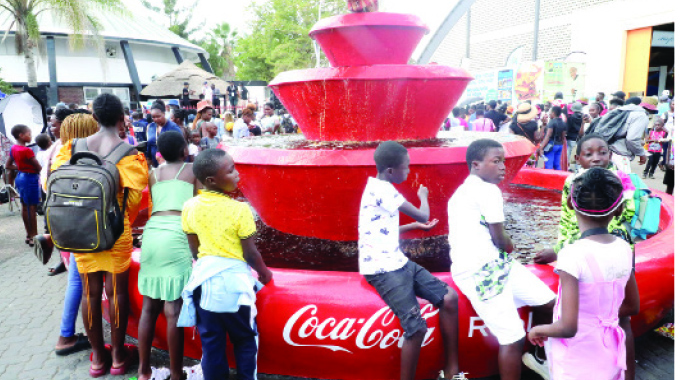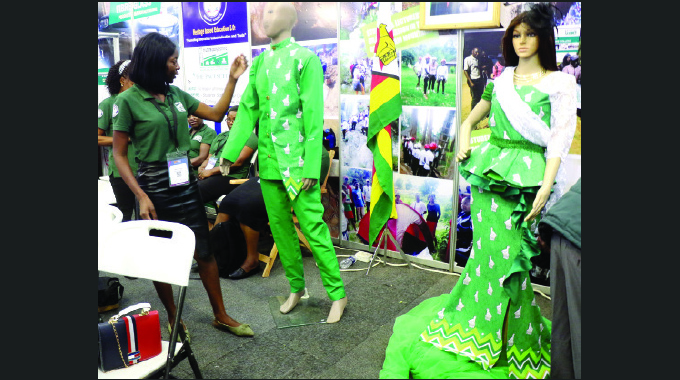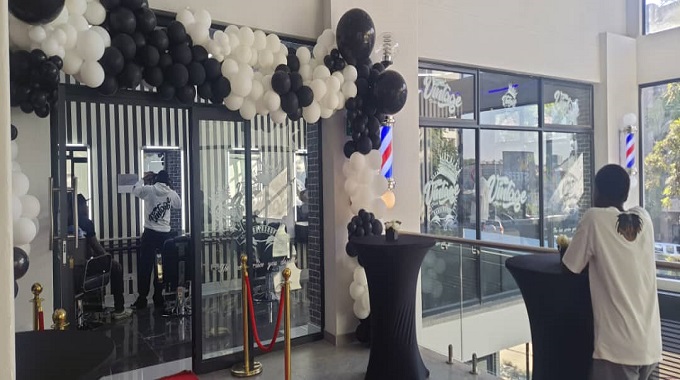Who are the pioneers of Zim music?
might be old in the business, but before them were the real explorers of music who shaped Zimbabwe’s music into what it is today.
Much of the archive music we hear today started in church and could have been a fusion of traditional and missionary music.
It is well-documented that in the 19th century, the vicissitudes of missionary enterprise in Matabeleland around 1859 brought about hymn singing in churches when the likes of Father Peter Prestage opened Empandeni Mission.
This was followed by other missionary enterprises such as Hope Fountain, Inyati, St Augustine’s, Mount Selinda, Hartzel, Saint Patrick’s and many others where hymn singing became the norm.
The early pioneers of Zimbabwean music used traditional instruments such as mbira, hwamanda and chipendani.
There is more recent documented evidence of Zimbabwean popular music between the 1930s and the 1950’s when zitherists played traditional music which was based on religion and folklore. Names of famous zitherists during this period included Simon Chamatembo, Naison Sinakoma, Nhau Nzvenga, Robert Muzengeri and Midas Ngoroma.
With influence from Western countries such as Britain and the United States of America in the early 1950s, pop music became the norm and Zimbabweans began to dump their traditional instruments and replaced them with western instruments such as the guitar, the banjo, the harmonica and accordion.
Those who continued to play the mbira, chipendani chigufe or the hwamanda were now perceived as primitive by those who believed that it is only things coming from the West that would make one more acceptable, more respectable, more modern and more fashionable. To a large extent even the traditional drums (ngoma) were replaced by modern western drum kits with cymbals.
As there were no recording facilities in Zimbabwe in the 1930s, African musicians could only expose their music through live performances. Those who were adventurous enough, such as Robert Muzengeri, would go to South Africa to record. In fact, Muzengeri’s recordings of 1935 are still found in the National Archives of Zimbabwe. Titles include “Vaigara Mumakomo” and “Nhamo Yaive nava Agrippa”. These were the first recordings of tsava-tsava music.
As expected most of the early musicians in Zimbabwe lived in the capital where there were large fee-paying audiences. Because of the system of racial segregation that existed at that time, most African popular musicians performed in the all African township areas.
In Harare, Mai Musodzi Hall (known at the time as simply the Recreation Hall) was the venue for the most popular musicians and names such as Thompson Gara, Augustine Musarurwa (of the Skokiaan fame), Mura Nyaruka, Riya and the Mususas (of the “Hotera Ya Gwaku” and “Ndiye Gwaku Akatangisa Matapi” fame), Isaac Musekiwa, Edward Khanda and Elijah Muzanya made regular appearances at this venue.
However, the main music boom period of the 1940s until the 1960s was centred around Harare (then known as Salisbury) and it is during this period that well-known bands and musicians like the De Black Evening Follies, Golden Rhythm Crooners, Marshall Brothers, The City Slickers, The City Quads, The Capital City Dixies, Faith Dauti, Susan Chenjerai, Mable Pindurayi, Ernest Kachingwe, Safirio Madzikatire and The Broadway Quartet were born.
One well-known musician, Sam Matambo, who had been involved in music from the 1940’s, became a member of the De Black Evening Follies in 1948 and left them to join the City Quads in 1953 which was led by another famous artiste known as Sonny Sondo and supported by Titus Dan and Stephen Mtunyani.
Together, they became a prolific singing group. Most of their weekend concerts were held at Mai Musodzi Hall in Mbare Suburb, (known at the time as Harare Township). Most of their material was copyright jazz music from the United States of America.
However, they eventually produced their own music in the same genre. In 1961, they recorded a 12-track album entitled “Music in The African Township” which was mixed in Germany and distributed by Polydor Records. They did not receive any royalties for this recording and one of their popular tracks titled “Lizofika Lini Ilanga?” (When will the sun rise?) forced the Southern Rhodesian authorities to ban the record from air-play.
A popular Chichewa song, “Ndafunafuna” which was re-arranged by Sonny Sondo and recorded by The City Quads in 1963 became a big hit. This tune has since been recorded over and over again by a host of female musicians who include Molly Banda, Virginia Jangano and much later by Prudence Katomeni-Mbofana with Jazz Invitation.
At a later stage, the City Quads were joined by Andrew Chakanyuka, Simangaliso Tutani Arthur Xahe and Duncan Achulu. Together, they formed an incredible team which not only played music but was also involved with charity work for the community. Sam Matambo, the last surviving member of the City Quads died in April, 2010.
From the 1940s to the late 1950s Zimbabwean urban music had a basic rhythm known as “tsava-tsava” (or tsaba-tsaba in other regions). Most urban young people would get together at community centres to learn to play either the saxophone, the banjo or the pennywhistle. They would then form trios with the three instrumentalists playing or singing to tsava-tsava rhythm.
Alternatively they would form quartets which comprised a drummer, a pennywhistle player, a banjo or guitar player and a saxophonist. They would team up with choirs which provided vocal music and together the first Zimbabwean pop bands came into being. The famous Augustine Musarurwa song “Skokiaan” which became an international hit after it was copied by The Shadows (on their visit to Zimbabwe with Cliff Richard) and later by Louis “Satchmo” Armstrong, was composed during the tsava-tsava period. At that time, African people were not allowed to drink the “white man’s liquor”.
So in the townships, opaque beer and skokiaan which took seven days to brew were the only alcoholic drinks the Africans were familiar with. Sometimes the skokiaan was turned into “kachasu” or “nipa” which was a finer brew and looked like gin or brandy but was more lethal than these two.’ This “illegal” kachasu was brewed secretly and sold at parties known as “societies”. The parties were usually livened up by tsava-tsava players who kept them going until the drinking had stopped. The police often raided these “shebeens” or “societies” arresting both the brewers and the drinkers.
Famous tsava-tsava players of the 1950s included the De Black Evening Follies (mentioned above), The Black and White Band, The Golden City Dixies, Kandido Sabawu, Elijah Muzanya, The Coloured Arcadia Rhythm Lads, Zimunya Danger Band, Kaison Riya, Machipisa Band, Isaac Musarurwa, Augustine Musarurwa and Oliver Masvaure.
The pop bands of the 1940s and 1950s had a different sound from those of today. There was less experimentation with foreign sounds and almost everyone played the same rhythm. As bands got more and more popular, imported equipment such as the string bass, French horns and acoustic guitars became prevalent. These produced a variety of music.
Some tsava-tsava bands even took some of their music across the borders of Zimbabwe. For instance in 1948, Mura Nyaruka travelled to Zaire and performed with bands there until 1951. On his return Mura joined the band which was resident at Gwaku’s restaurant in Mbare. As a renowned composer he made a radio jingle “Hotera yaGwaku” which was played on the air daily to advertise the famous Gwaku restaurants. He also composed “Ndiye Gwaku Akatangisa Matapi” which made Gwaku a very famous man in those days.
Mura, however, had very itchy feet. In 1957 he left for Malawi and played with Malawian musicians for three years. The main reason for leaving Zimbabwe was that Gwaku’s place and other Tsava-tsava venues had closed down. Officials had begun to associate Tsava-tsava with illegal brew and European beer drinking which was prohibited at the time.
It was not until the early 1960s after Mura returned from Malawi that Zairean rhumba music became popular in Zimbabwe. Mura had already done a stint in the Democratic Republic of Congo, Zaire, so he was instrumental in introducing this new Congo beat.
With Zairean bands touring Zimbabwe in the early 1960s rhumba and cha-cha-cha beat began to rule supreme. For a time Mura played with most of the touring bands such as Baba Gaston, O.K. Jazz, O.K. Success, The Vedettes and the Limpopo Jazz Band. In 1968, Mura put his saxophone away and gave up music for good.
This is what he had to say: “From the sixties to the mid-seventies, Zimbabwe’s young people began to like more and more foreign music. They liked pop, Zairean rhumba and South African smanje-manje music.
Local musicians had to humble themselves by playing this foreign music and imitating the foreign performers. That was the only way to survive because that is what the people wanted. When Zairean bands arrived, they easily got high paying contracts in the city hotels. Local bands had never had chances to play in these places. When South African musicians started touring this country in 1968, they performed in stadiums because no hall was large enough for the thousands who gathered to see them. I couldn’t stand it, so I gave up.”
Although Mura had also been instrumental in introducing Zairean music into Zimbabwe, he had a point. The cultural invasion of Zimbabwean music which took place in the 1960s did not stop there. The days of tsava-tsava are gone and apart from the association with traditional mbira music most of the music coming out of Zimbabwe today has foreign elements.
- Feedback: [email protected]








Comments